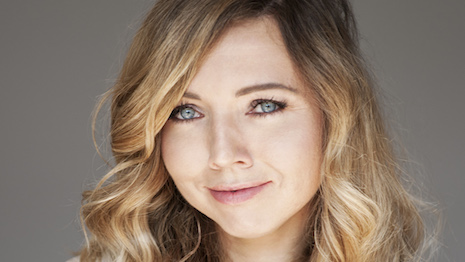 Anna Szubrycht is founder of Chic Being
Anna Szubrycht is founder of Chic Being
By Anna Szubrycht Prestige beauty brands are the extension of luxury experiences that are offered by worldwide fashion maisons. These particular prestige brands are constantly on the lookout for new consumer insights and innovations. Each year they provide consumers with new technologies, designs and products that are easier to apply and give better results while opening the doors of luxury to a wider audience. Recently, however, it is the social media and Internet-driven trends that seem to pave the way to success for prestige beauty. Not making it up The way modern women access and experience beauty is more dynamic and varied than ever before, which poses an important question: How to create desire and allure while still engaging with a modern luxury customer? The entire prestige beauty category in the United States saw a 7 percent increase sales in 2015. Prestige make-up was a particularly strong subcategory, with sales exploding at 13 percent. Two essential factors of such industry growth was innovation in beauty products and social media trends. Barry Beck, chief operating officer of luxury beauty chain Bluemercury, stated that 55 percent of the top-selling items did not exist five years ago. Media consumption and purchasing channels have evidently changed over the last few years. Taking prestige make-up category as an example, the latest NPD Group research titled, “Makeup In-Depth Consumer Report 2016,” showed that the Internet went from the least-frequented source of make-up products information and purchase four years ago to the fastest growing in 2016. Additionally, social media born trends such as highlighting, strobing or contouring have added the most incremental value to the entire make-up category over the last year in the United States. In 2016 the Internet surpassed print and broadcast advertising as the preferred source of make-up product information. Millennials are especially more likely to rely on online sources such as Web sites, social media sites, YouTube videos, blogs and mobile applications. They are the driving force behind the latest beauty trends that we see in today’s market. The Internet, in addition to being used for product and brand information, has become a critical platform for product purchases. It ranked among top five most common channels used for purchasing makeup products, below department stores and ahead of direct sellers, national chains and beauty supply stores. It is no surprise then that midsized brands with millions of truly involved followers such as Anastasia Beverly Hills, Huda Beauty or Glossier are changing the game through savvy social media and direct selling strategies, things that multinational prestige brands struggle at executing successfully. Future perfect To be successful in the future, prestige beauty brands will have to build both allure and well-established online communities in a very coherent manner. They can achieve this by being desirable trendsetters with clear and coherent mission and brand values, opening themselves to a social and cultural dialogue with their community and by identifying and being adaptable to online trends. Prestige beauty brands should only adopt certain trends if it is applicable to both their brand identity and target audience. Balancing upscale style, inspiring content and something more profound such as connection to the myth should be at the core of well-crafted strategy. For example Chanel, no matter what it does, always refers to its original message, “emancipated elegance,” and follows through on its brand promise. In its latest campaign launching N°5 L’Eau, Chanel used its statement, additionally reinforced by the power of paradoxes and a perfect execution on social media – an ideal mix appealing to the younger audience. French-American model/actress Lily-Rose Melody Depp kissing the huge flacon of perfumes brought the attention of 2.1 million followers and 174,000 likes as a result of just one photo.
 The Chanel L'Eau No. 5 campaign feature French actress/model Lily-Melody Depp
The Chanel L'Eau No. 5 campaign feature French actress/model Lily-Melody Depp
 Nili Hadida in the YSLBeauty campaign
Nili Hadida in the YSLBeauty campaign
 The Aesop Skincare effort
The Aesop Skincare effort
 The Hourglass Cosmetics push
The Hourglass Cosmetics push
